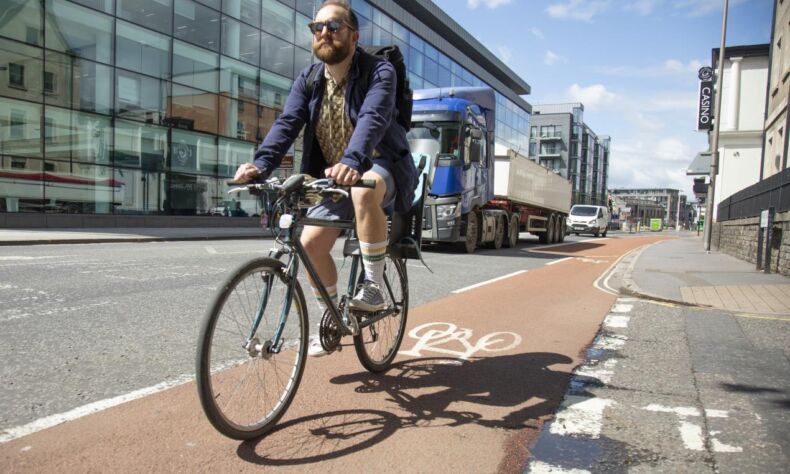Plans to make new cycle lanes clearer in a bid to reduce conflict between cyclists, pedestrians and other road users are set to be considered by councillors at the next meeting of the Transport and Connectivity Committee on Thursday 15 May 2025.
Members will consider plans to trial a new red high friction surface on sections of segregated cycleways in the city centre.
The trial will test whether the new surface improves safety for cyclists and other road users, which will inform the council’s cycleway surfacing policy that is being developed for the city.
Councillor Ed Plowden, Chair of the Transport and Connectivity Committee, said:

I am keen to test this new approach to our cycleways, as it should tell us if using a red surface helps to reduce the number of pedestrians and other road users moving into cycle paths by mistake, before deciding whether to roll this approach out across the city.
It would be a significant investment if we decide to update our policy, so careful thought needs to be given to make sure it is effective before we commit to this in the long-term.
Committee members will hear that several sites are being considered for the trial, including resurfacing a section of cycleway on the Old Market Gap or Bristol Bridge.
Other options including trialling it on proposed cycleways that are part of upcoming projects, such as on the Anchor Road and College Green junction, or on parts of the city centre transport corridor project. Possible locations include Redcliffe Roundabout, Bedminster Bridges, and Union Street where it meets Haymarket or Nelson Street, or High Street and Wine Street, or Lewins Mead and Christmas Street.
As these are busy areas, by using VivaCity camera sensor evidence and engagement with the public, it will help the council to decide whether the high friction red surface helps to prevents accidents and near misses and to test public opinion.
The trial is expected to cost between £100,000 and £250,000, which will be funded by Clean Air Zone income.
